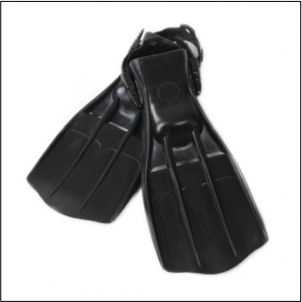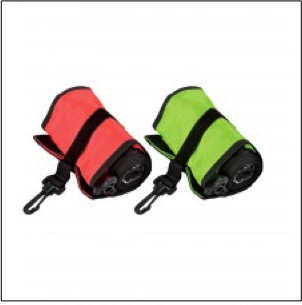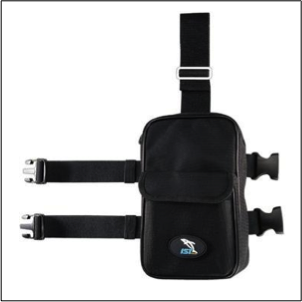My room looked like a dive shed the last few weeks, gear strewn about as I packed for our 100m dive training in the Red Sea. I try to be a minimalist in general, but you need a sizable amount of gear to safely reach 100m and return all in one piece! People often asked me what gear I'm using, so here it goes, a "what's in my bag" post (not-quite a la Zoella style). I hope this helps others sorting out dive kit! Please add any questions below.
| Rebreather. We're diving the Hollis PRISM 2. There are dozens of other rebreathers on the market; I'll leave it to other forums to discuss each unit's relative merits. I'm happy with the PRISM, however. Hollis and Oceanic helped in a major way on Mission 31 and I'm glad to be working with the company again. | Wing and Backplate. I'm using the Hollis wing and backplate that support the PRISM. I secretly want OxyCheq's 40lb wing in camo :), but the Hollis system is great and looks cool too. | Backup Dive Computer. We dive Shearwater Petrels. They're pretty standard for rebreather diving. There's also a Shearwater connected to the rebreather as the main dive computer. My backup died on this trip to the Red Sea, I'm sad to say. It's still unclear what the problem was, but fortunately I was still able to dive using paper dive tables as a backup. |
| Regulator. I attach this to a bailout tank carrying less than 50% O2, usually my bottom gas, travel gas, or air bailout. Attached to the first stage is a second stage, low pressure hose and submersible pressure gauge (SPG). It's got a DIN valve, which is what's recommended for tech diving. I'm happy with the Hollis 212 DC1 N-Swivel DIN Maxflex. My dive buddies use Scubapro and Apeks. | Oxygen Clean Regulator. I'm happy with the Hollis 210 HO2 Oxygen DIN regulator. I attach it to a bailout tank with high percentage O2. It also has a low pressure hose and submersible pressure gauge (SPG) attached. Tip: It's nice to have different-looking SPGs on bailout regulators so it's harder to accidentally read the wrong one on a bailout ascent. | Cylinders. I've two 3L cylinders for the rebreather, one for pure oxygen and the other for diluent gas. I'm happy with FABER tanks although it's hard to go wrong here. I leave my tanks at our research site where we can't rent 3L cylinders easily. I don't travel with them if I can avoid it. You have to remove the valve if you travel with them. It's important your O2 tank is clearly marked as such. |
| Fins. I have the Military Fins from Northern Diver. I chose them because only Northern Diver offered jet fins in a size smaller than XL or XXL. My feet are small (i.e., normal woman size). I wanted Hollis Yellow-Tip F1s, "the Ferrari of fins," but they only come in large sizes. | Cutting Device. Aquasnips are so great I even used them to cut my hair. Tip: If you can be bothered, you should drill out the bolt in the middle and replace with a stainless steel one to avoid corrosion on the blades. | Backup Cutting Device. I got this badass-looking knife/shears multi-functional tool from Northern Diver but I don't recommend it. The knife is so sharp and exposed that in stressful situations underwater you can easily puncture the wrong thing (your counterlung! your finger!). I'd rather just have a secondary set of shears or a line snip. |
| Mask. I dive with an Oceanic Shadow. The important thing for a mask is that a) it fits and b) it doesn't leak. Simple as that, and yet some divers could talk for days about masks. I don't recommend you get into one of these "debates." e.g., there is discussion as to whether clear or black mask edges are better. Really, either is fine. My dive buddies have sea fungus growing in their masks and don't care. I put neoprene straps on my masks so they don't tug hair. | Backup Mask. I used a SEAC Capri S/BL Snorkeling Mask. It fit my face great and had a great field of view, BUT when ascending from 60m it started leaking from the seams. So yes, don't go cheap on the mask. For the truly crazy (or desperate) diver, my instructor claims as yet another backup mask you can trap bubbles under your hand and look through them. But also people forget you can open your eyes underwater without a mask and see kindof ok. It's not pleasant, especially in the salty Red Sea, but you will be able to make an ascent. We do many drills without masks to prepare us for this worse-case situation. | Mask Case. You certainly don't need one of these; SCUBA masks don't scratch that easily. But I tend to be rough on gear and have been really happy with this soft mask box by iQ-Company. Both my primary and secondary masks fit inside. It helps keep things organized and scratch-free while traveling, and while I'm diving I sometimes stash my phone and sunglasses in it. I secretly want iQ-Company's orange dry bag too. |
| Wet Notes. It's a simple thing but SUPER IMPORTANT. I use this to communicate underwater when what I need to say is too complicated for hand signals. I also use it to record data and a dive plan. Our instructor uses one to list emergency drills. I really like the Hollis Waterproof Notebook. It's robust, easy to clip on, and easy to refill with commonly available wet journals. | Surface Marker Bouys (SMBs). For 100m dives we need one yellow (to signal an emergency) and at least one orange (to indicate our presence to boat traffic). I have Northern Diver DSMBs and love them. They are 1.8m tall and thin, so yours will be taller and stiffer than everybody's muahahah. My dive buddies use BSAC SMBs and they are ok too. It's great having a low pressure inflator on the SMB. You also need reels or finger spools to attach to each SMB. | Pockets. These are to store your backup mask, cutting devices, wetnotes, etc. other things you might need on your dive. I originally used IST Sports Scuba Divers Thigh Storage Pouchs but THEY FELL APART. They are shredded and completely unusable after only a dozen dives. Instead I'd recommend Dive Rite Pockets or, for the oh-so-stylish, dive shorts with pockets. |
| Spares Kit. I've the official Hollis PRISM 2 spares kit but it's not great. Here's what I really wanted/have needed as spares: an extra mouthpiece, extra scrubber basket mesh (I heard of someone fixing a cut scrubber basket with mosquito net), spare O2 sensor, spare wiring harness, replacement O-rings, and white sponges for the scrubber basket. | Exposure Protection. For the Red Sea I wore my 5mm Oceanic wetsuit from Mission 31 (it's awesome) with a neoprene hood and old sailing booties inside my fins. Our instructor dove dry suit. | Travel Case. I like to save my back so I "invested" in the cheapest hard-shell four-wheeled suitcase I could find and slapped a Hollis sticker onto it. If you are macho you can carry your rebreather in the flight case it came with, but the suitcase saves a lot of hassle. |
| Additional Gear Bag. Not everything fits into the giant wheeled suitcase believe it or not. I put everything else in a mesh SCUBA bag that I'v had for a while. I don't even know who makes it, but it's so durable I love the bag. You can put all your kit in it and then dunk the whole bag to rinse. I've used it for 8 years to transport gear and even used it to move across to Oxford from Boston. | Dive Light. I recommend anything by Light & Motion. A light isn't always necessary in the Red Sea and Caribbean, where we are lucky because there's plenty of light even at 100m most of the day. Light & Motion supported us on Mission 31 and we used them for some of the underwater high speed filming on Mission 31. It's a great company. | Random Little Things. A pouch in my dive bag contains spare 9V and AA batteries for the rebreather, ever-so-handy bolt snaps, a lighter to stop frying nylon, a USB stick (to grab photos when Internet is ultra-slow!), my certification cards (which I use to clean the threads on the rebreather scrubber basket). I need to add to this bag some O2 grease, a sharpie and tape. |
| Credit @scidiving | <-- I know it's a ton of gear, but to put things in perspective, it's a small amount compared to what our rebreather instructor Elliot Jessup took on his recent expedition. Check out their 200lb of gear on @scidiving Instagram! <-- Packing Hollis breathing machine while getting ready for Red Sea expedition! Video from INSTAGRAM - check out #GirlsWithToys |























 RSS Feed
RSS Feed
